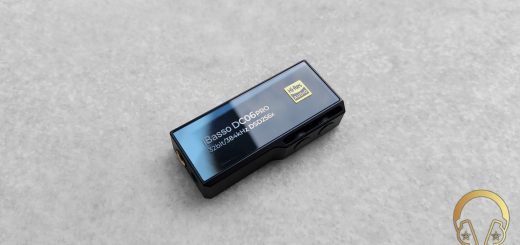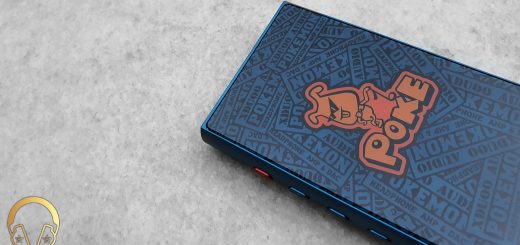iBasso D17 Atheris Review
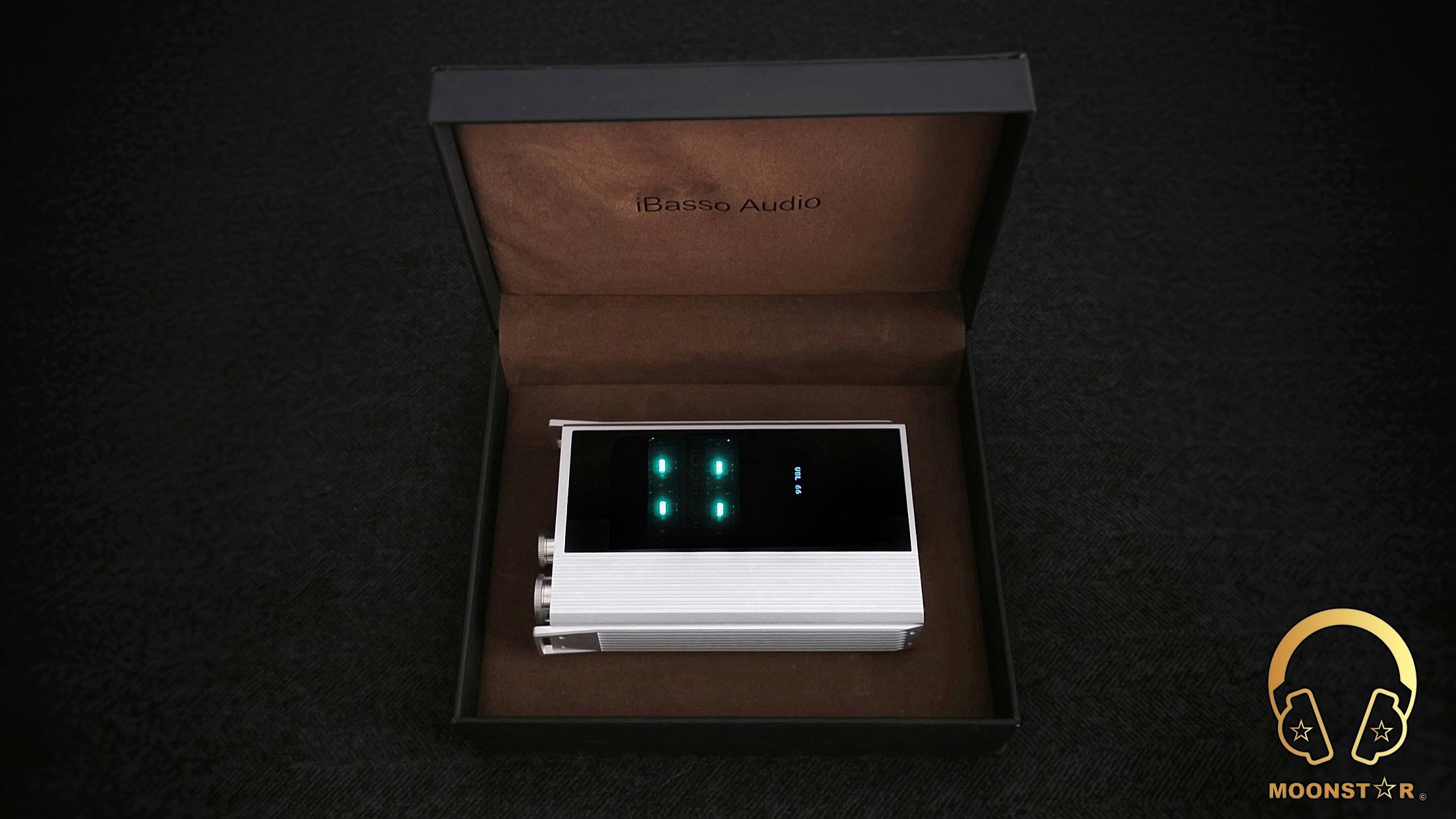
iBasso D17 Atheris Review
Introduction:
The iBasso D17 Atheris is a premium transportable Digital-to-Analog Converter and Amplifier created for serious audio enthusiasts. It offers exceptional sound quality in a device that is easy to carry. Its core strength is its dual digital sound engine. It uses two distinct, high-end DAC types: a sophisticated R2R ladder design, built with hundreds of precise resistors for a natural, rich sound, and a highly efficient 1-bit PWM design for immense detail and clarity. Both systems are expertly controlled by iBasso’s custom FPGA-Master 3.0 chip, which guarantees an extremely pure and accurate digital signal. This dual technology gives users the ability to choose between three sound modes to customize their listening experience. They can select a mode that blends the two DACs, one that converts all audio to the R2R style for a more analog warmth, or one that converts everything to the 1-bit style for the highest resolution.
The amplifier section of the D17 is designed for both power and audio character, featuring dual Korg Nutube 6P1 vacuum tubes. These miniature tubes introduce a musical, warm, and rich texture to the sound, typical of classic tube devices, while boasting a very long operational life. To ensure peak performance, the tubes are powered by a high-voltage 24V supply and supported by robust buffer chips. The result is substantial power output, exceeding 1200mW per channel, which means the D17 can easily and effectively drive almost any type of headphone, including large or high-impedance models.
The device is also built with many practical features for portable use. It has a clear 1.3-inch OLED display for navigating settings and a reliable dual-battery system that allows for up to 15 hours of continuous playback. For connectivity, the D17 includes a USB-C input, as well as coaxial and optical digital inputs. For headphones, it provides both balanced (4.4mm) and standard (3.5mm) outputs. The entire unit is housed in a durable aluminum body and features a special three-layer isolation system designed to minimize vibrations and protect the sensitive internal components from microphonics, ensuring a consistently clean audio performance.
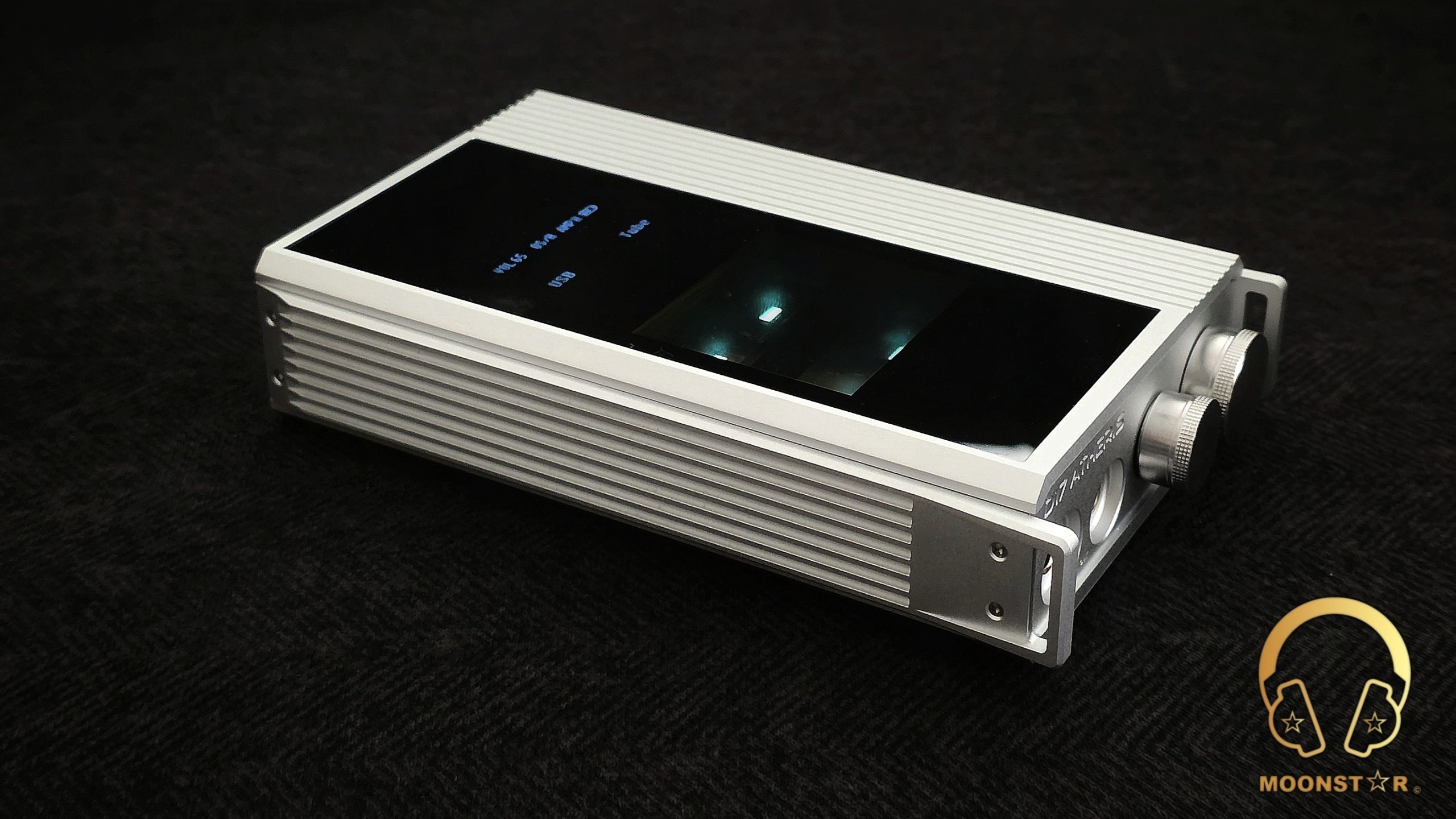
Disclaimer:
I would like to thank iBasso for providing me the D17 Atheris Portable DAC/Amplifier as review sample. I am not affiliated with iBasso beyond this review and these words reflect my true and unaltered opinions about the product!
Price & Availability:
The iBasso D17 Atheris sits at the premium end of the transportable DAC/Amplifier market, with a price point reflecting its advanced, complex architecture. Its current price is approximately 1999.00 US$. More information can be found under the link below;
Package & Accessories:
The iBasso D17 Atheris arrives in a premium hinged box with a black outer surface and subtle iBasso branding on the top. Opening the lid uncovers a brown velvet-lined interior that gives a sense of care in presentation.
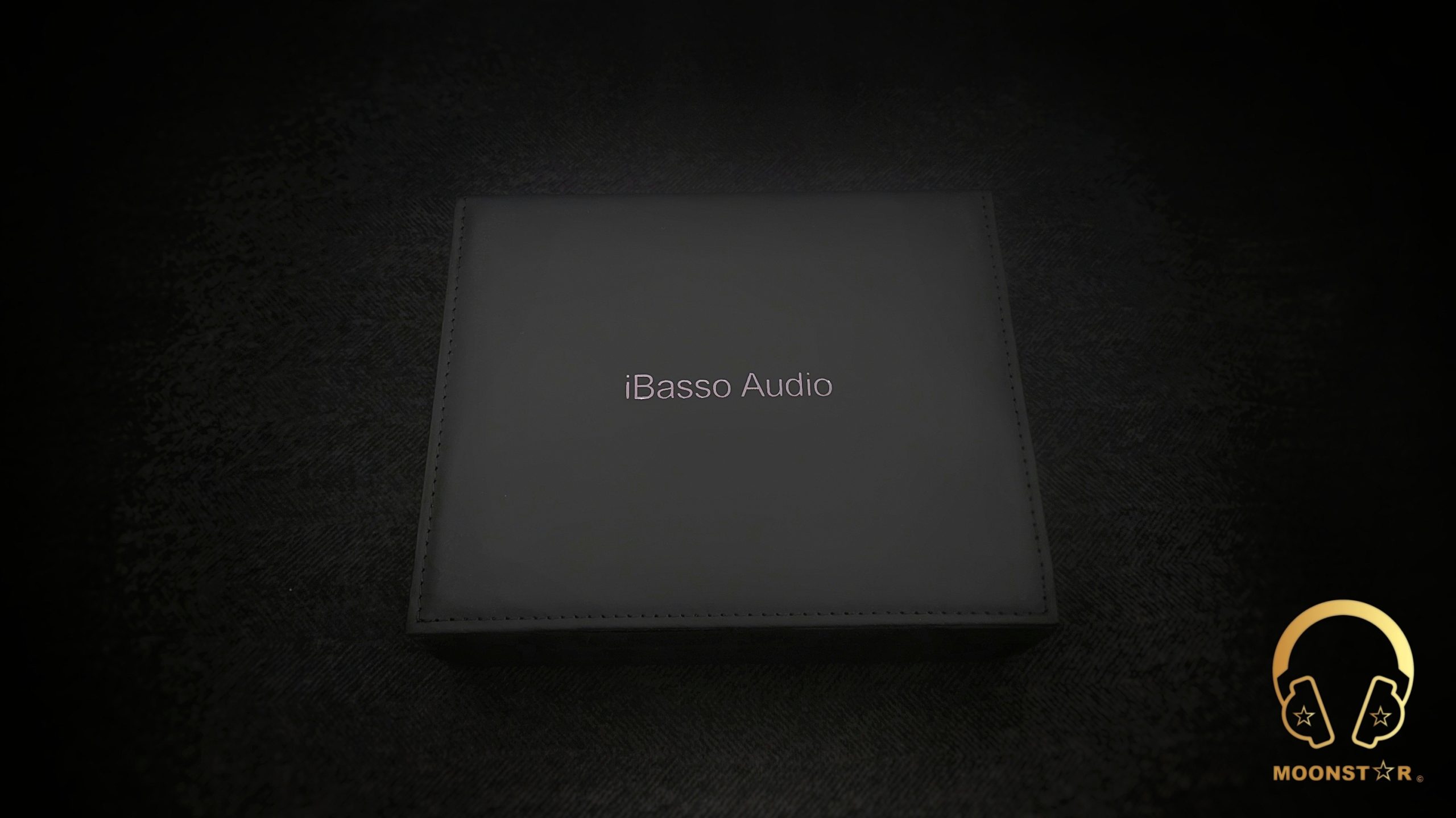

Inside the box are the following contents and accessories;
- 1 x iBasso D17 Atheris Portable DAC/Amplifier
- 1 x USB A to Type-C to USB cable
- 1 x USB Type-C to USB Type-C cable
- 1 x USB Type C to Lightning Cable
- 2 x Coaxial/OPT cable
- 1 x Pleather Pouch
- 1 x Soft cable Pouch
- 1 x Wrap-around Leather Case
- 1 x Print Materials
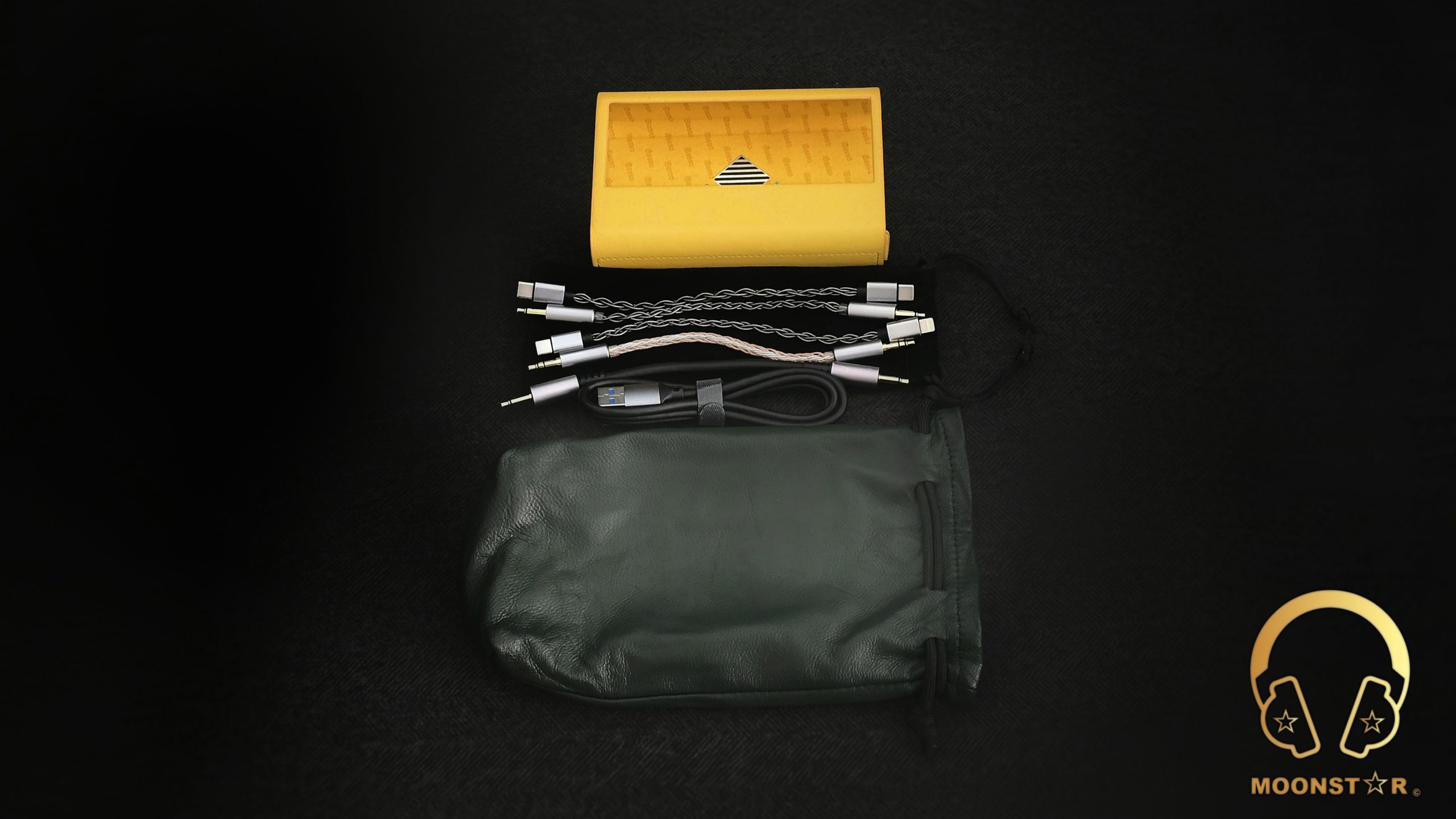
The D17 Atheris includes a solid selection of cables organized in a compact pouch, with options for various devices.
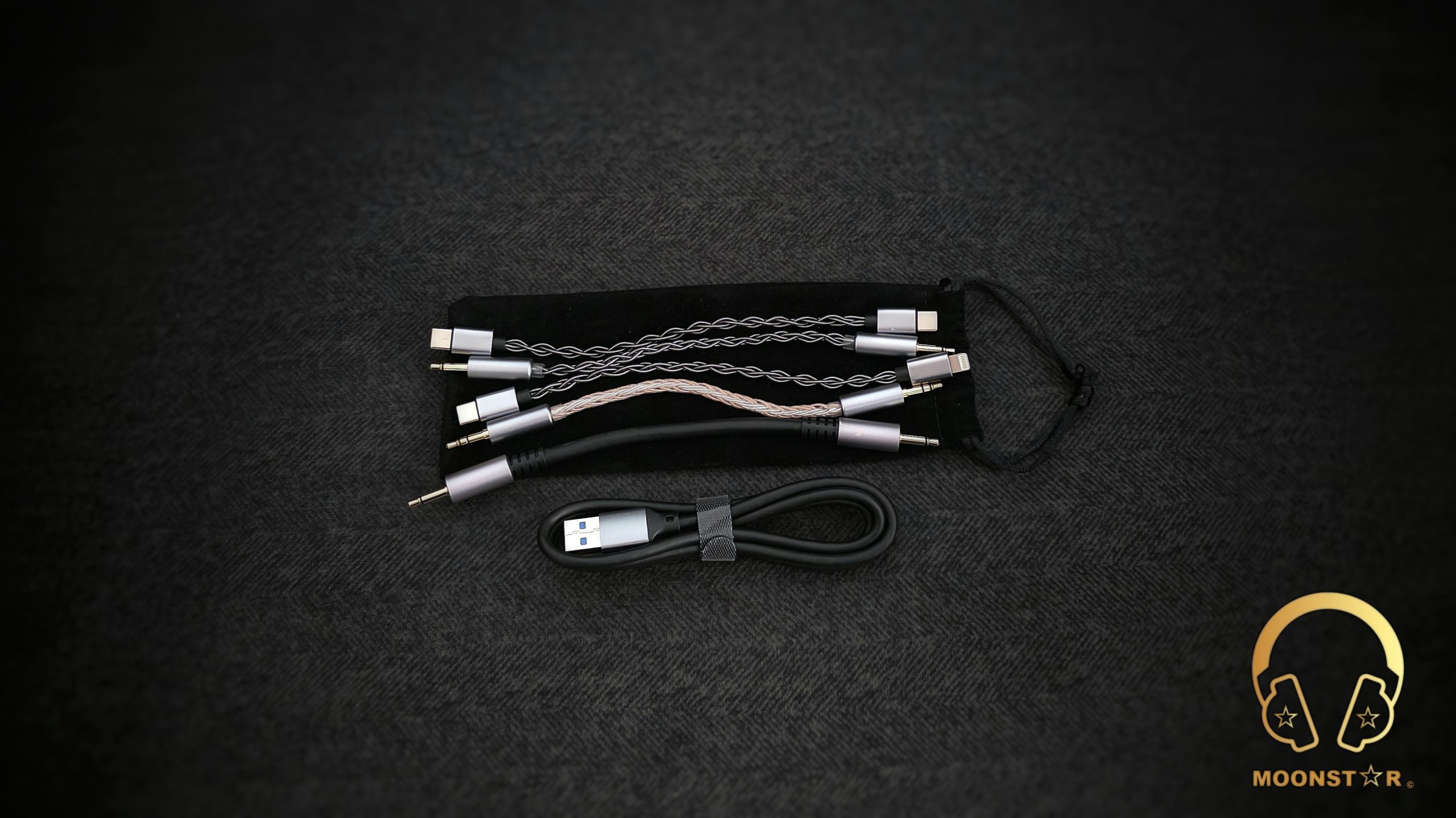
The standout accessory is the wrap-around leather case in a yellow tone. It wraps securely around the device with a cutout that exposes the top panel and display, making controls accessible without removing the case. Moreover, there is a nice leather pouch in a deep-green color that offers extra protection.
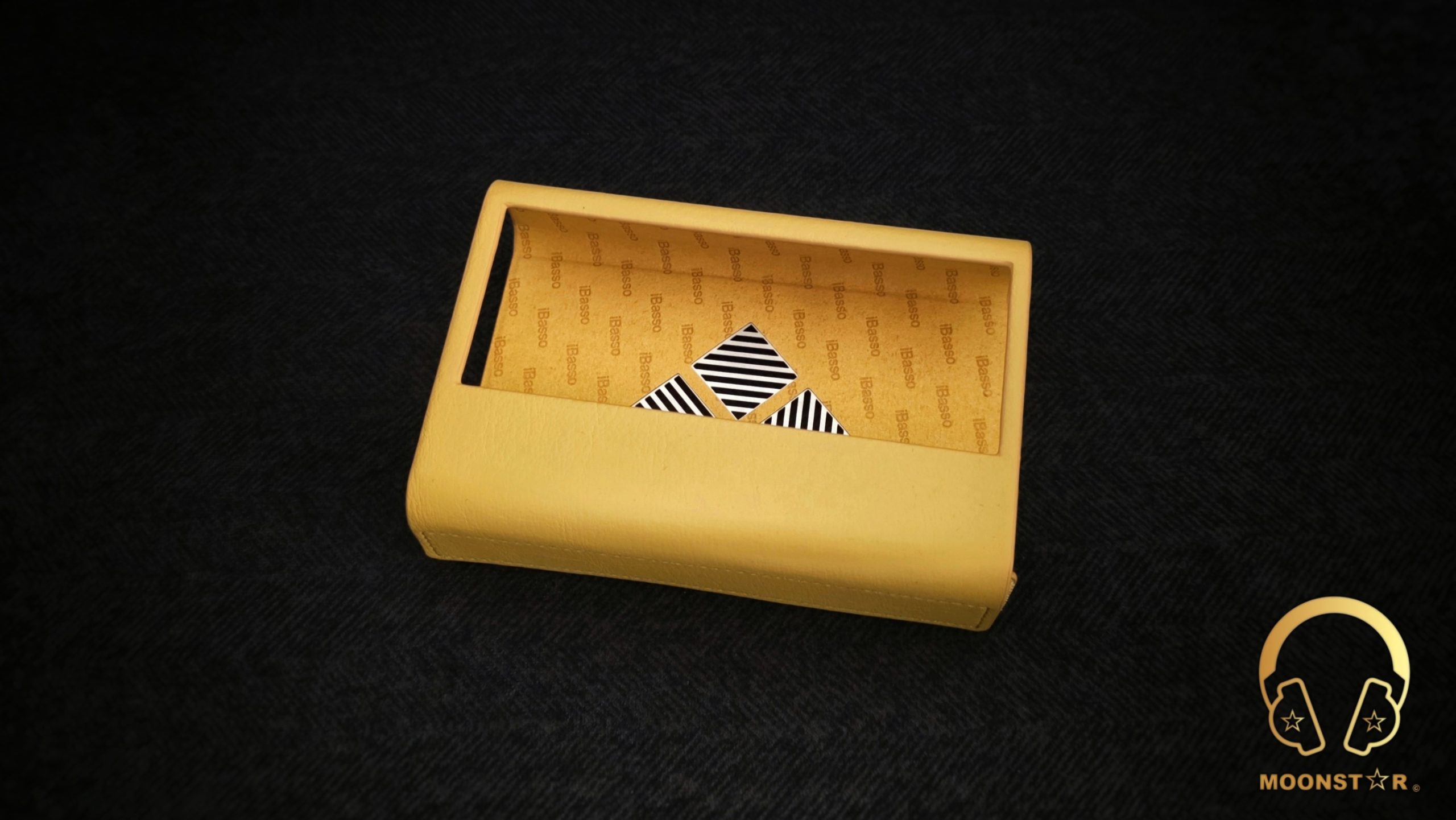

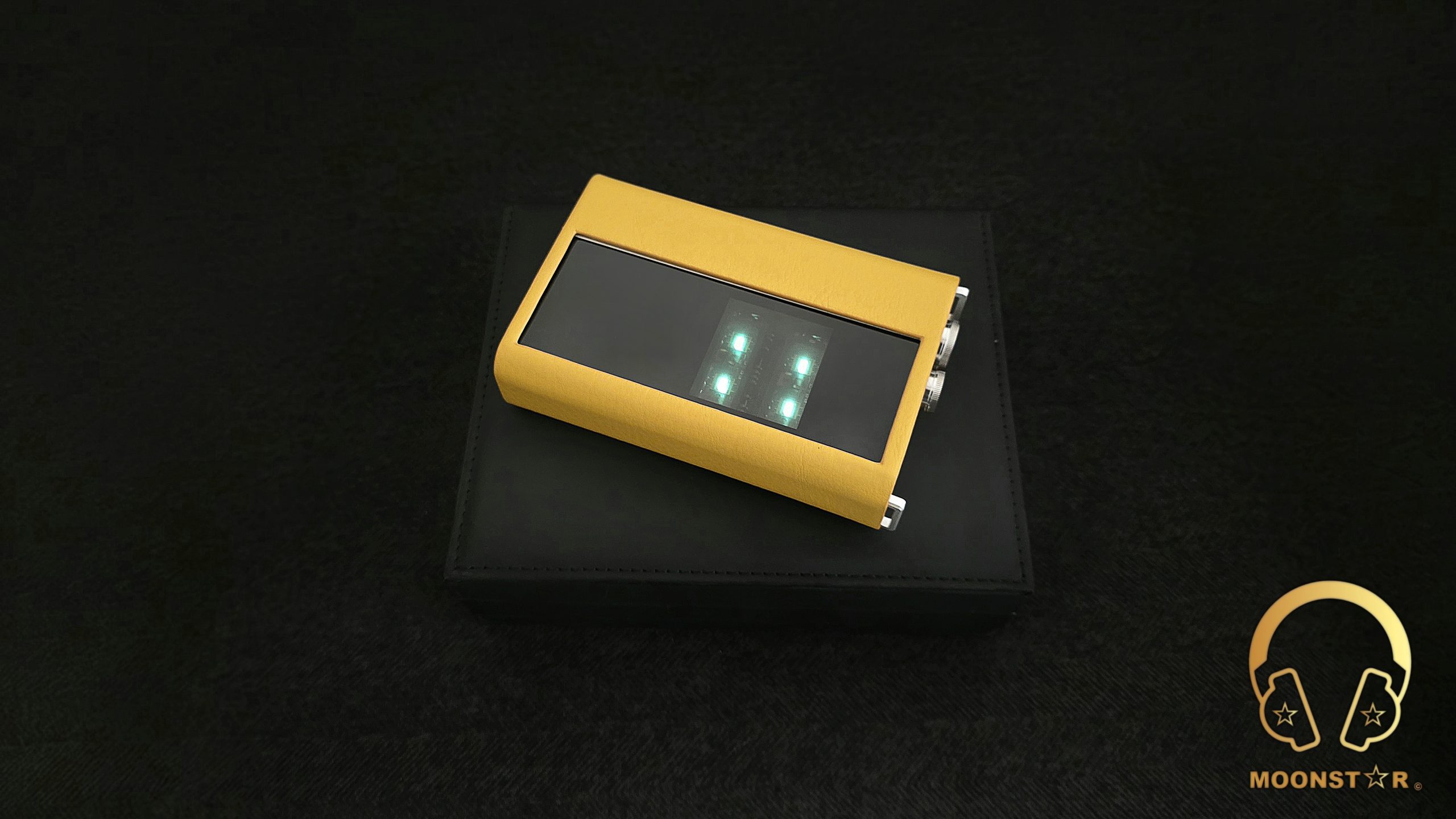
Design & Build Quality:
The iBasso D17 Atheris combines industrial strength with subtle refinement in its aluminum alloy chassis, finished in a premium silver anodized tone with a black glass top panel. At 470 grams and dimensions of 145 x 86.3 x 31.6 mm, it feels substantial yet manageable for transport, larger than many dongles but still fitting in a messenger bag.
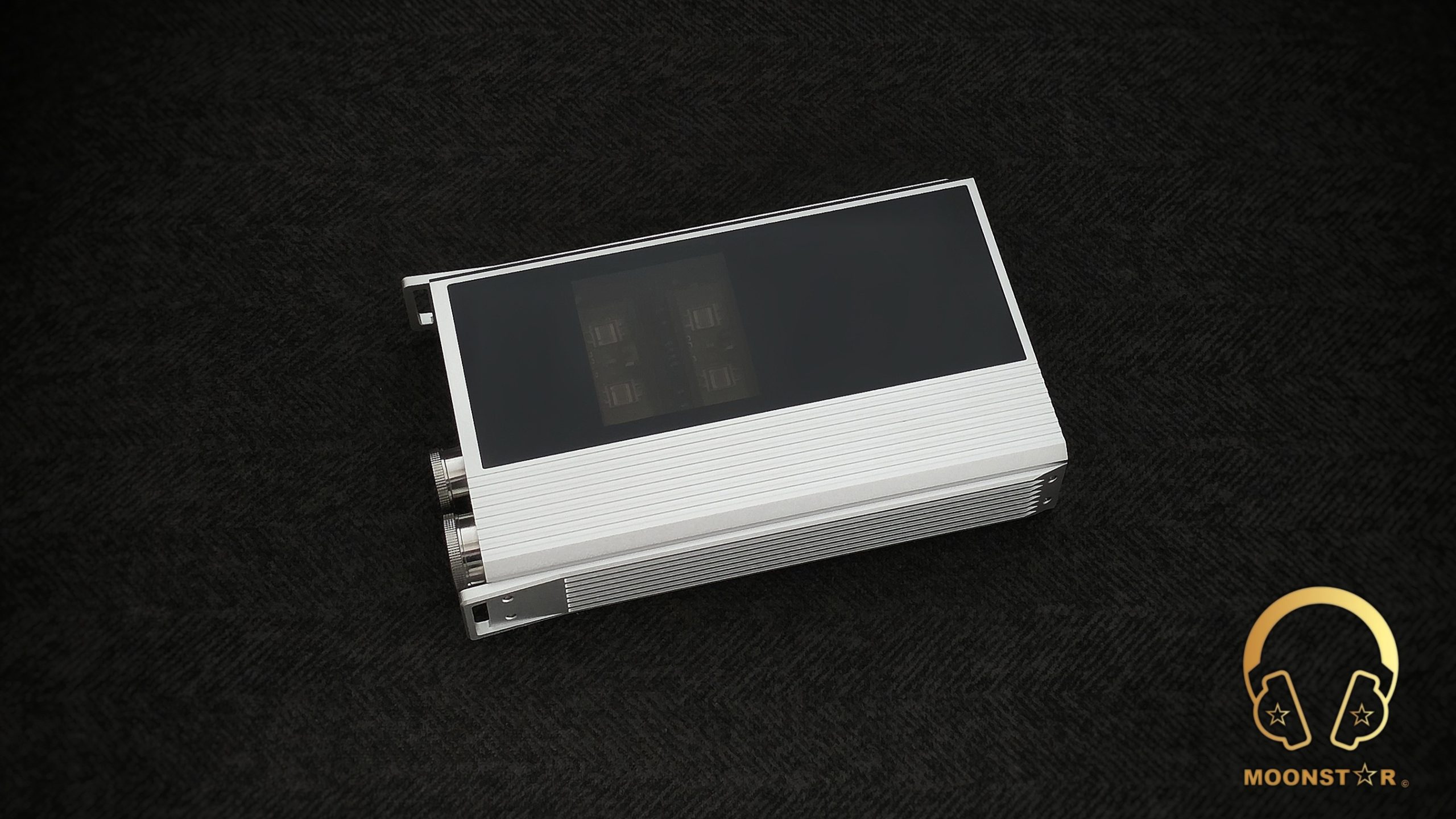
A three-layer seismic isolation system, consisting of a double-layer printed circuit board combined with damping materials (the two PCB layers connected via pin connectors to distribute and dampen lateral loads), minimizes vibrations, resonance, and microphonic effects, with the tubes mounted using damping materials on the second layer for secondary reduction.
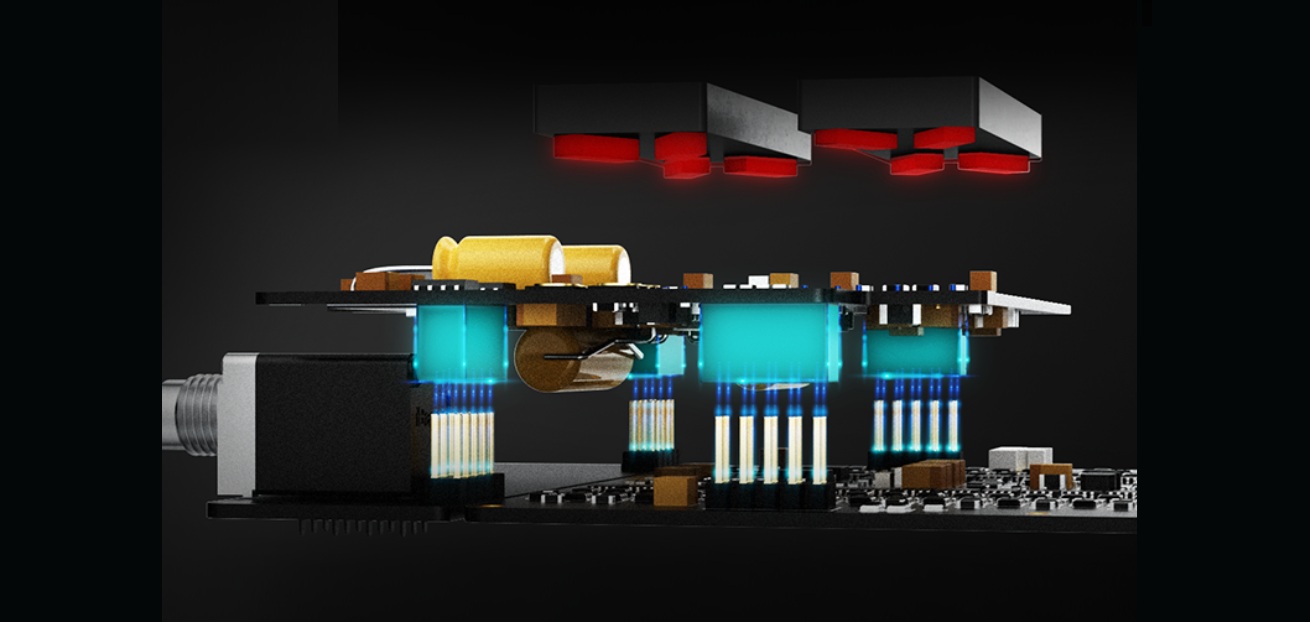
The top surface features a flush black glass panel housing the 1.3-inch OLED screen, centered and displaying input source, sample rate, volume, battery life, and DAC mode clearly, even in moderate ambient light. This is the same display used in the D16 Taipan. The screen’s only drawback is that brightness cannot be adjusted; in bright environments, readability can be challenging. I believe this could be addressed with a firmware update.

To the left and right of the screen, four small green LED indicators for the Nutube tubes sit in two pairs, visible through subtle cutouts that hint at the analog heart with a faint, rhythmic glow, adding a warm, almost breathing accent to the clean, ribbed silver lines.

The bottom face showcases the signature R2R branding embossed in bold, raised lettering above a finely machined geometric pattern of parallel ridges and angular chevrons that converge toward the center, creating a dynamic, almost architectural texture.
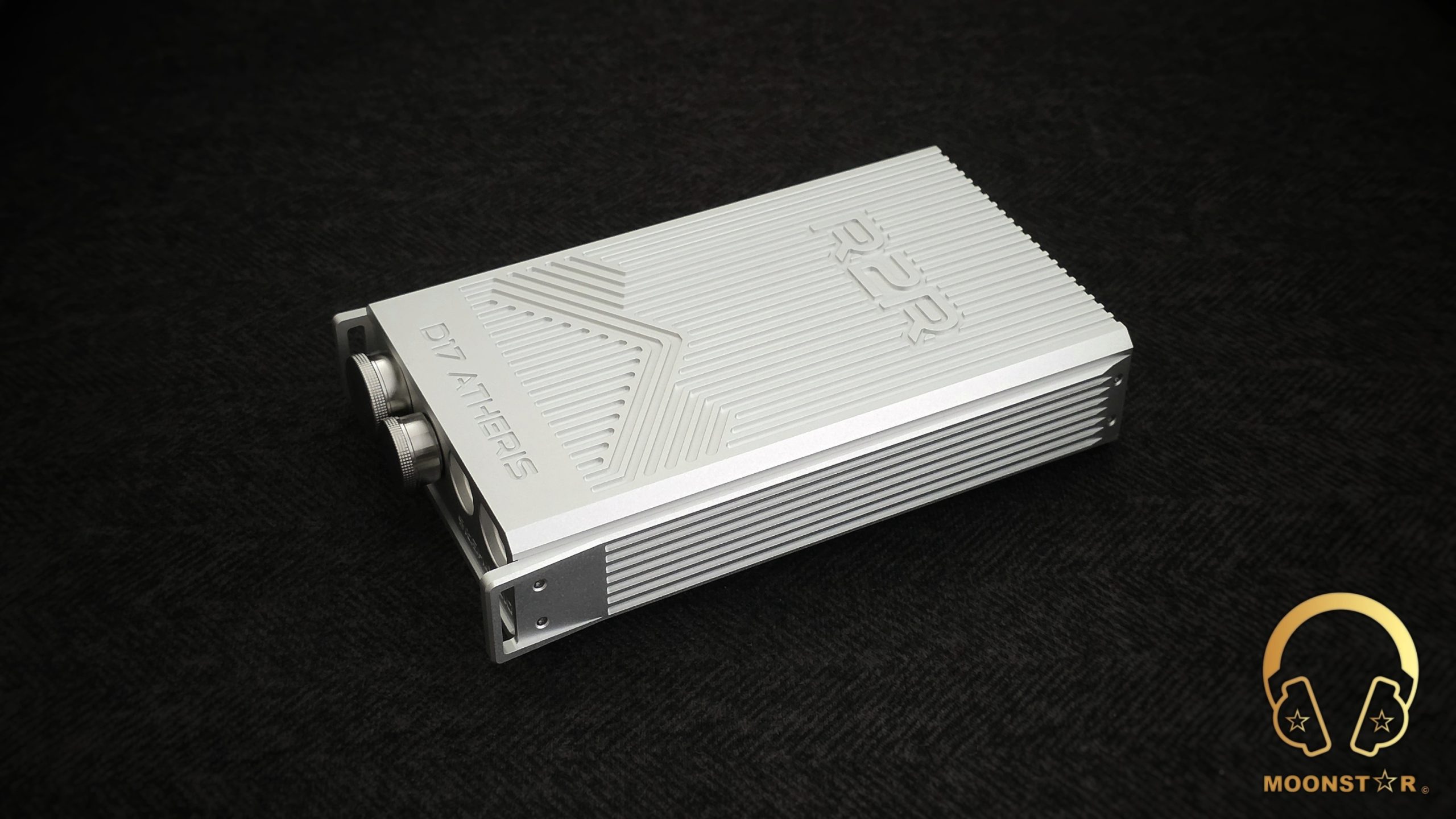
On the fron of the device is the D17 ATHERIS branding etched in precise, minimalist font, positioned just above two gold-plated headphone outputs: 4.4mm balanced on the left and 3.5mm single-ended on the right, both recessed slightly for protection and labeled subtly with “OUT” beneath. These ports sit flush within the ribbed aluminum frame, offering firm, satisfying engagement.

The right side hosts the primary controls: a large 24 Position 4 Section Stepped Attenuator (familiar from the DC-Elite) that controls the analog volume. There is also a smaller secondary knob that handles the digital volume, doubles as a screen on/off control, and acts as a menu navigator via short presses. Both controls are machined from solid aluminum, matching the chassis in finish and feel, and sit nicely off the surface for easy access.

The sides feature deep, vertical ribbing that extends the full height of the device. This design element serves multiple functions: it improves grip, aids in heat dissipation, and adds a structured look to the overall industrial aesthetic.
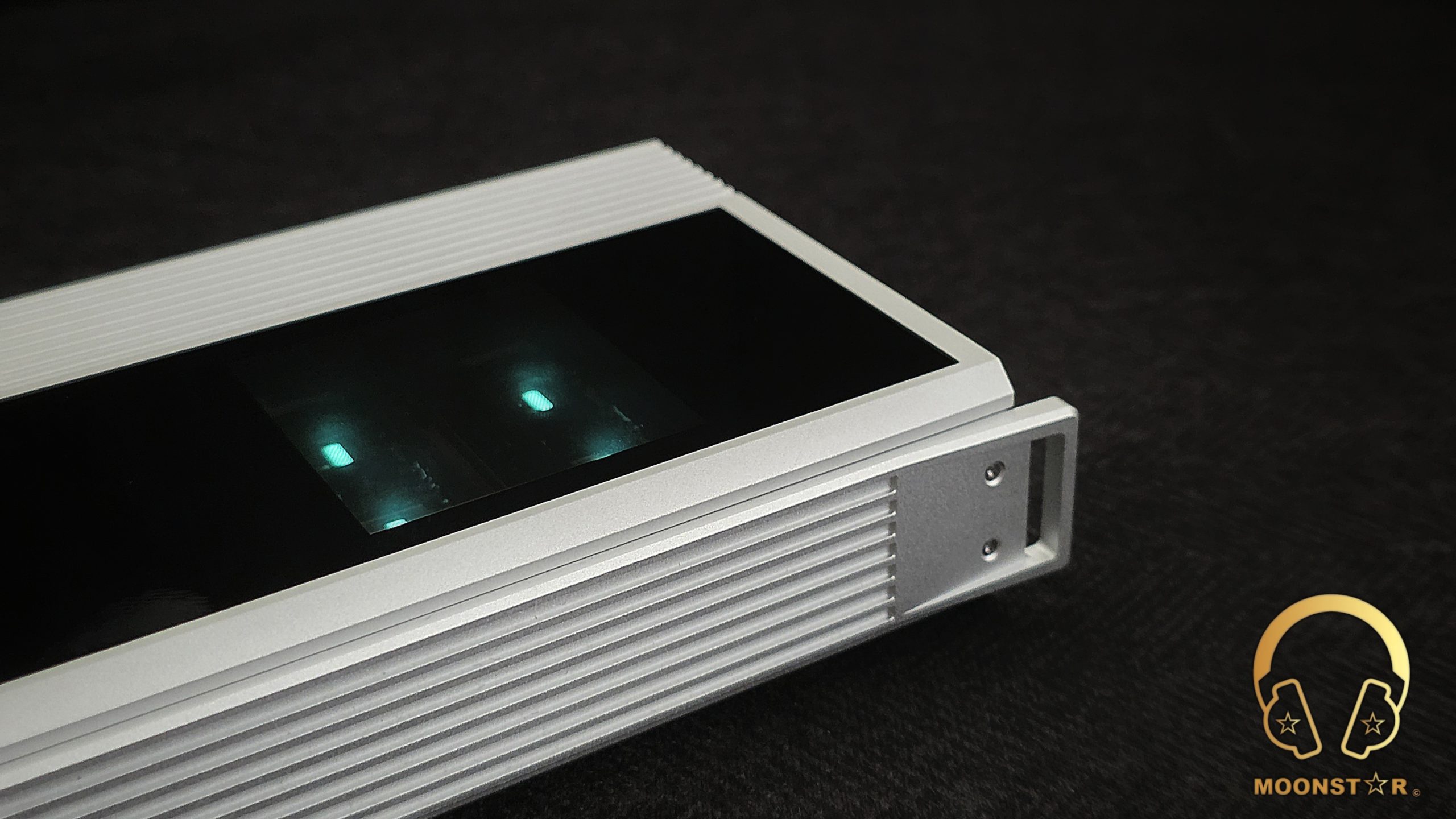
The rear panel houses the primary connectivity ports: a combined coaxial/optical input (COAX/OPT), dual USB-C ports (the left is labeled DAC for data input, and the right is labeled CHARGE for dedicated power input), a dedicated power switch with a clear ON/OFF stop, and a small status LED that gently pulses during use. Two hex screws offer user-accessible battery replacement, highlighting the focus on long-term serviceability.
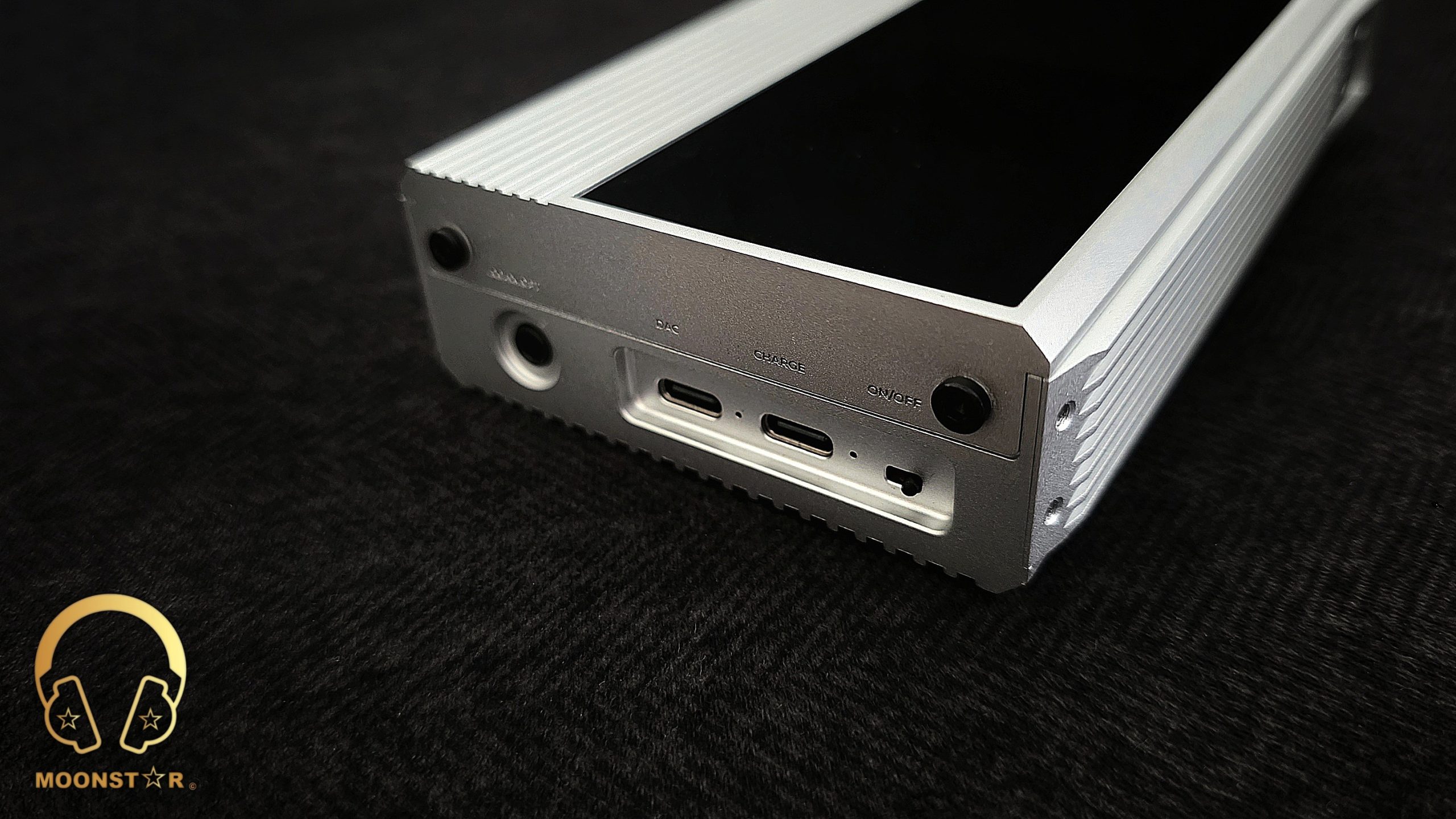
Overall, the D17 Atheris shows a functional design where all elements serve a practical purpose. Key visual and tactile features include the prominent R2R branding on the bottom face, four glowing Nutube indicators on the top panel, the textured ribbing, and the precise machining.

Technical Specifications:
- DAC Design : Dual Discrete DAC (R2R + 1-bit)
- R2R DAC : 284 high-precision film resistors (0.01% tolerance, 25 ppm), fully balanced 4-channel
- 1-bit DAC : 64 PWM DAC units (8 sets of 8E, 4 channels)
- PCM : up to 32bit/768kHz
- DSD : Native DSD64, DSD128, DSD256, DSD512
- Coaxial Input : Up to 32bit/768kHz / DoP256
- Optical Input : Up to 24bit/192kHz / DoP128
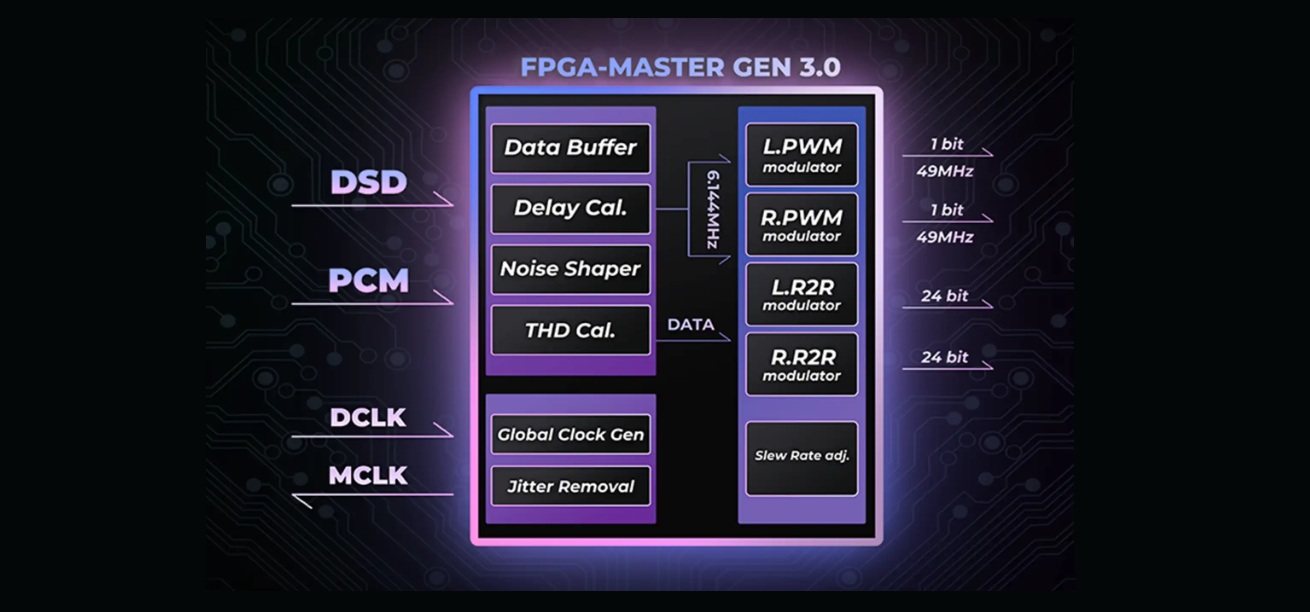
4.4mm Balanced PO (R2R Mode):
- Output Power: 1200mW + 1200mW @ 32Ω (THD <1%)
- Output Level: 7Vrms (AMP H Gain + DAC H Gain)
- THD+N: -76dB (tube amplification)
- Dynamic Range: 116dB (AES17-20K A-wt)
- SNR: 116dB (AES17-20K A-wt)
- Crosstalk: -129dB
- Frequency Response: 15Hz–22kHz (-1dB), 15Hz–40kHz (-2.5dB)
- Output Impedance: 1.9Ω
3.5mm Single-Ended PO (R2R Mode):
- Output Level: 2.4Vrms (DAC Low Gain), 4Vrms (DAC High Gain)
- THD+N: -104dB
- Dynamic Range: 126dB (AES17-20K A-wt)
- SNR: 126dB (AES17-20K A-wt)
- Crosstalk: -120dB
- Frequency Response: 15Hz–22kHz (-1dB), 15Hz–40kHz (-2.5dB)
4.4mm Balanced LO (R2R Mode):
- Output Level: 2.4Vrms (DAC Low Gain), 4Vrms (DAC High Gain)
- THD+N: -104dB
- Dynamic Range: 126dB (AES17-20K A-wt)
- SNR: 126dB (AES17-20K A-wt)
- Crosstalk: -120dB
- Frequency Response: 15Hz–22kHz (-1dB), 15Hz–40kHz (-2.5dB)
3.5mm Single-Ended LO (R2R Mode):
- Output Level: 2Vrms (DAC Low Gain), 2.4Vrms (DAC High Gain)
- THD+N: -103dB
- Dynamic Range: 120dB (AES17-20K A-wt)
- SNR: 120dB (AES17-20K A-wt)
- Crosstalk: -100dB
- Frequency Response: 15Hz–22kHz (-1dB), 15Hz–40kHz (-2.5dB)
4.4mm Balanced PO (1-bit Mode):
- Output Power: 340mW + 340mW @ 32Ω (THD <0.5%)
- Output Level: 3.5Vrms (AMP H Gain + DAC H Gain)
- THD+N: -76dB (tube amplification)
- Dynamic Range: 109dB (AES17-20K A-wt)
- SNR: 109dB (AES17-20K A-wt)
- Crosstalk: -123dB
- Frequency Response: 15Hz–22kHz (-1dB), 15Hz–40kHz (-2.5dB)
- Output Impedance: 1.9Ω
3.5mm Single-Ended PO (1-bit Mode):
- Output Power: 87mW + 87mW @ 32Ω (THD <1%)
- Output Level: 1.7Vrms (AMP H Gain + DAC H Gain)
- THD+N: -70dB (tube amplification)
- Dynamic Range: 104dB (AES17-20K A-wt)
- SNR: 104dB (AES17-20K A-wt)
- Crosstalk: -118dB
- Frequency Response: 15Hz–22kHz (-1dB), 15Hz–40kHz (-2.5dB)
- Output Impedance: 1Ω
4.4mm Balanced LO (1-bit Mode):
- Output Level: 2Vrms (DAC Low Gain), 2.4Vrms (DAC High Gain)
- THD+N: -114dB
- Dynamic Range: 118dB (AES17-20K A-wt)
- SNR: 118dB (AES17-20K A-wt)
- Crosstalk: -120dB
- Frequency Response: 15Hz–22kHz (-1dB), 15Hz–40kHz (-2.5dB)
3.5mm Single-Ended LO (1-bit Mode):
- Output Level: 1Vrms (DAC Low Gain), 1.2Vrms (DAC High Gain)
- THD+N: -110dB
- Dynamic Range: 114dB (AES17-20K A-wt)
- SNR: 114dB (AES17-20K A-wt)
- Crosstalk: -100dB
- Frequency Response: 15Hz–22kHz (-1dB), 15Hz–40kHz (-2.5dB)
Input Interface:
- USB-C (Data): PCM 768kHz/32bit, DSD512;
- Coaxial: PCM 768kHz/DoP256;
- Optical: PCM 192kHz/DoP128
Output Interface:
- 4.4mm balanced PO/LO, 3.5mm single-ended PO/LO
Charging Interface:
- USB-C (Charge): 5V/3A, QC3.0 support Charging Time: 3 hours Battery Life: 15 hours
Other Parameters:
- Size: 145mm x 86.3mm x 31.6mm
- Weight: 470g

Hardware Features:
Digital to Analog Converter & Amplification:
The iBasso D17 Atheris stands out with its dual DAC approach, pairing a custom R2R ladder using 284 precision resistors (0.01% tolerance, 25 ppm) in a four-channel balanced setup with proprietary hardware resistance compensation circuit and software compensation algorithms, alongside a 1-bit discrete DAC of 64 PWM units.

The R2R handles PCM in NOS or OS modes, while the 1-bit excels in DSD native playback. FPGA-Master 3.0 oversees both, applying nanosecond-level delay corrections, wiring delay compensation, and clock regeneration from dual Accusilicon femtosecond oscillators with extremely low phase noise, yielding a professional DSP with 192 dB dynamic range and -174 dB THD+N. This results in THD+N figures of -104 dB for R2R and -114 dB for 1-bit, supporting formats up to PCM 768kHz and DSD512.

The amplification draws from dual Nutube 6P1 tubes in a four-stage balanced circuit, with 24V anode biasing for dynamic headroom and TI BUF634 buffers for current stability. Output reaches over 1200mW balanced in R2R mode, suitable for planar or high-impedance loads. Dual batteries isolate digital and analog sections, with an ultra-low-noise supply (0.6 μV, below LT304x’s 0.8 μV) using custom film and vintage SPRAGUE capacitors to suppress interference. Noise floor stays inaudible, even with sensitive IEMs.

4-Section 24 position Stepped Volume Attenuator:
The D17 Atheris integrates a compact 24-position, four-section stepped attenuator (one-tenth conventional size), ensuring channel matching under +/- 0.1 dB. Paired with DSP-based digital control, it offers seamless adjustments across the range, preserving signal purity without digital artifacts. The combination enables more precise volume output.
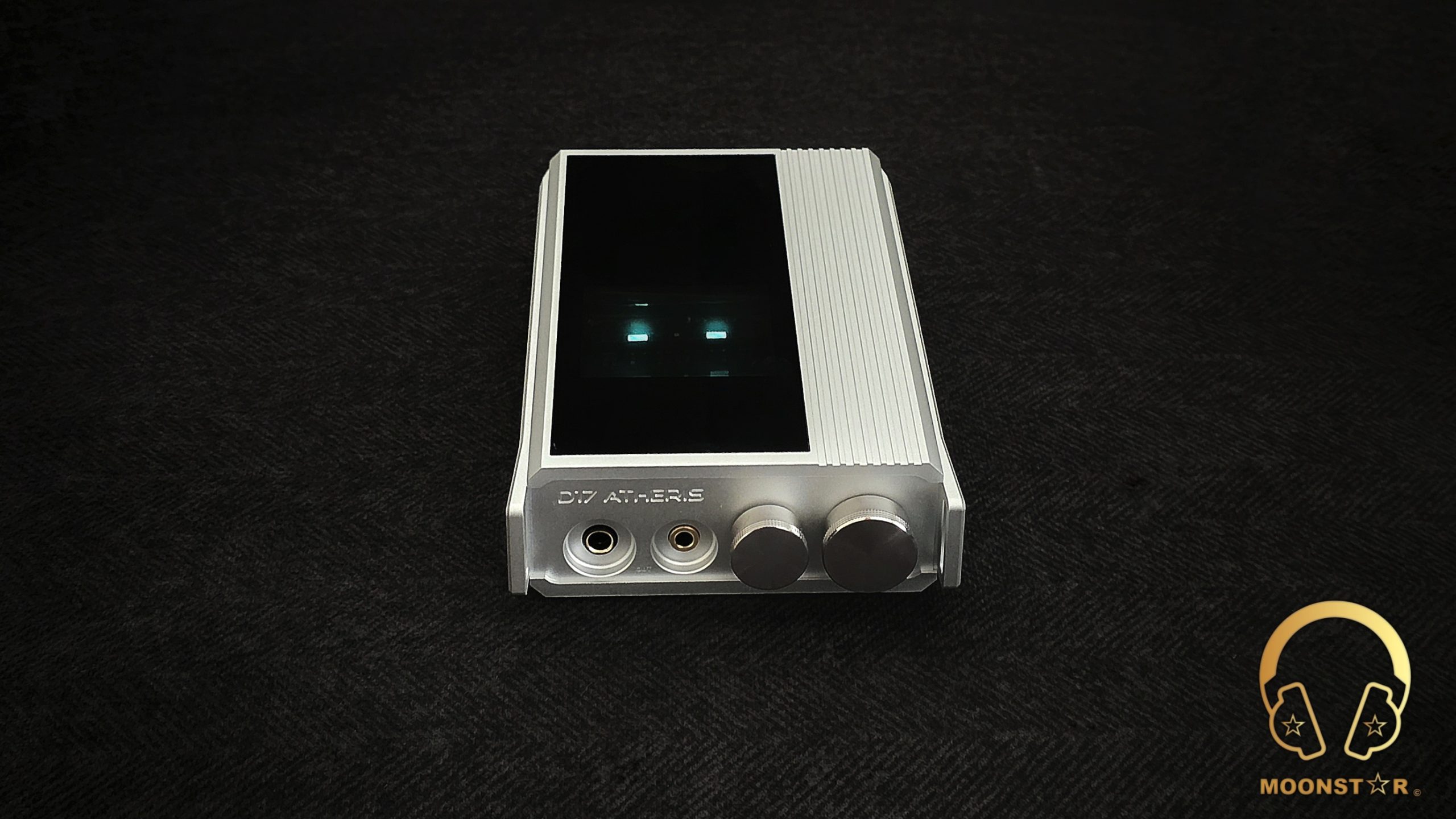
Connectivity:
The iBasso D17 Atheris connects broadly via USB-C for UAC 2.0 compatibility with Android 5.1+, Windows, and Mac, plus a Lightning adapter for iOS. Coaxial and optical inputs expand options for legacy sources. It pairs well with DAPs like the iBasso DX340, smartphones such as the Samsung Galaxy S25 Ultra or PCs like the MSI VECTOR GP68 HX 13V adapting to diverse setups.
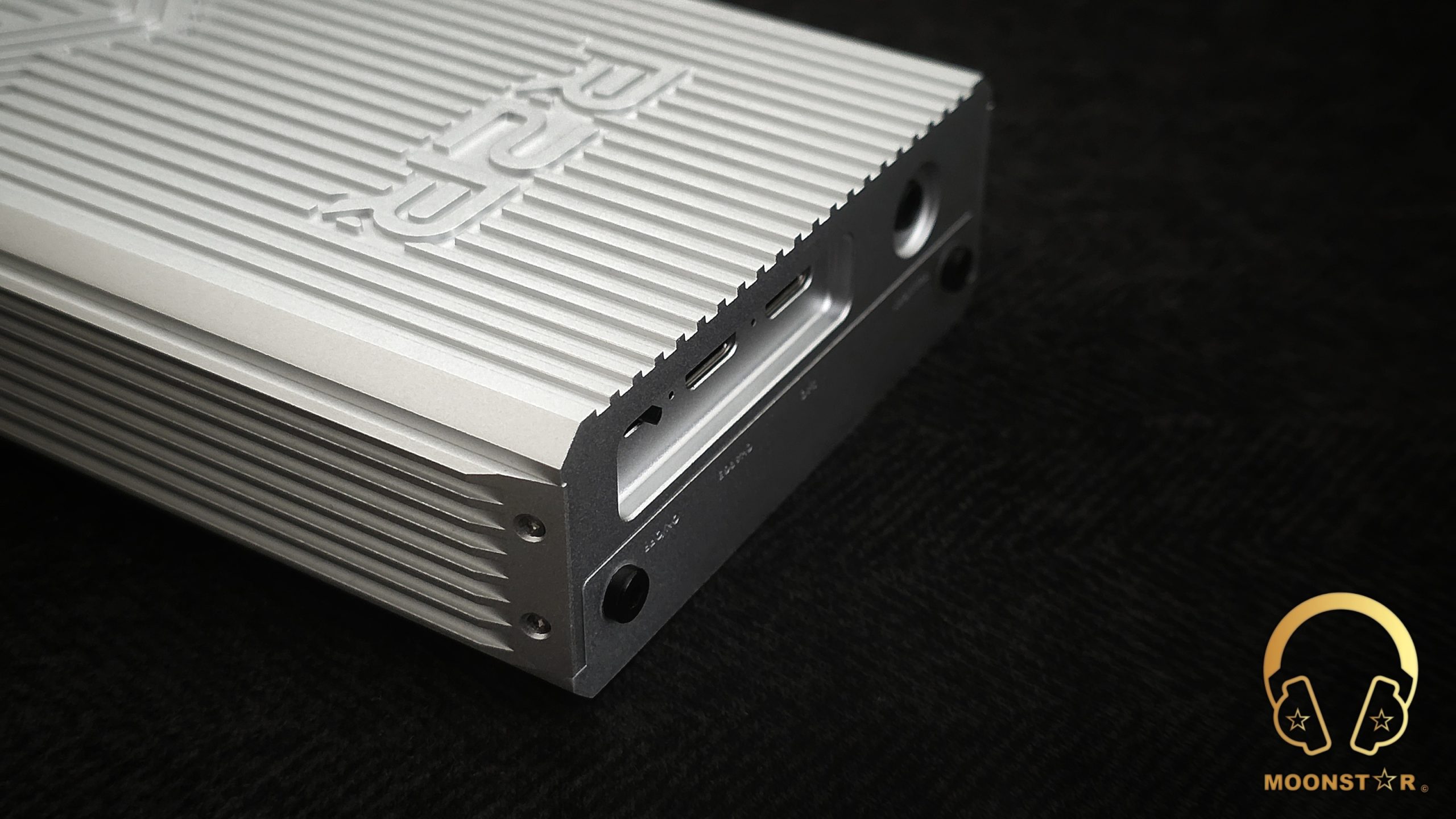
Battery Life & Power Management:
The D17 Atheris employs an advanced dual-battery architecture that strategically separates power for the DAC and headphone amplifier sections. This core design principle ensures stable, clean current delivery to the powerful amp stage while effectively isolating digital noise generated by the DAC, resulting in a pure output that remains uncolored even under high gain or heavy loads. While the official specifications claim up to 15 hours of operation, real world performance typically ranges between 11 and 14 hours.

This variance depends heavily on the chosen DAC mode (R2R is generally more power intensive), the gain setting, volume level, and the impedance of the connected headphone. In lighter use scenarios (low gain, moderate volume, efficient IEMs), the device tends to approach the upper end of this range. However, demanding listening sessions (high gain, R2R mode, power hungry planar headphones) will lean toward the lower bound of 11 hours. The unit supports fast charging, completing a full charge in approximately 3 hours via its QC3.0 compatible USB-C port.
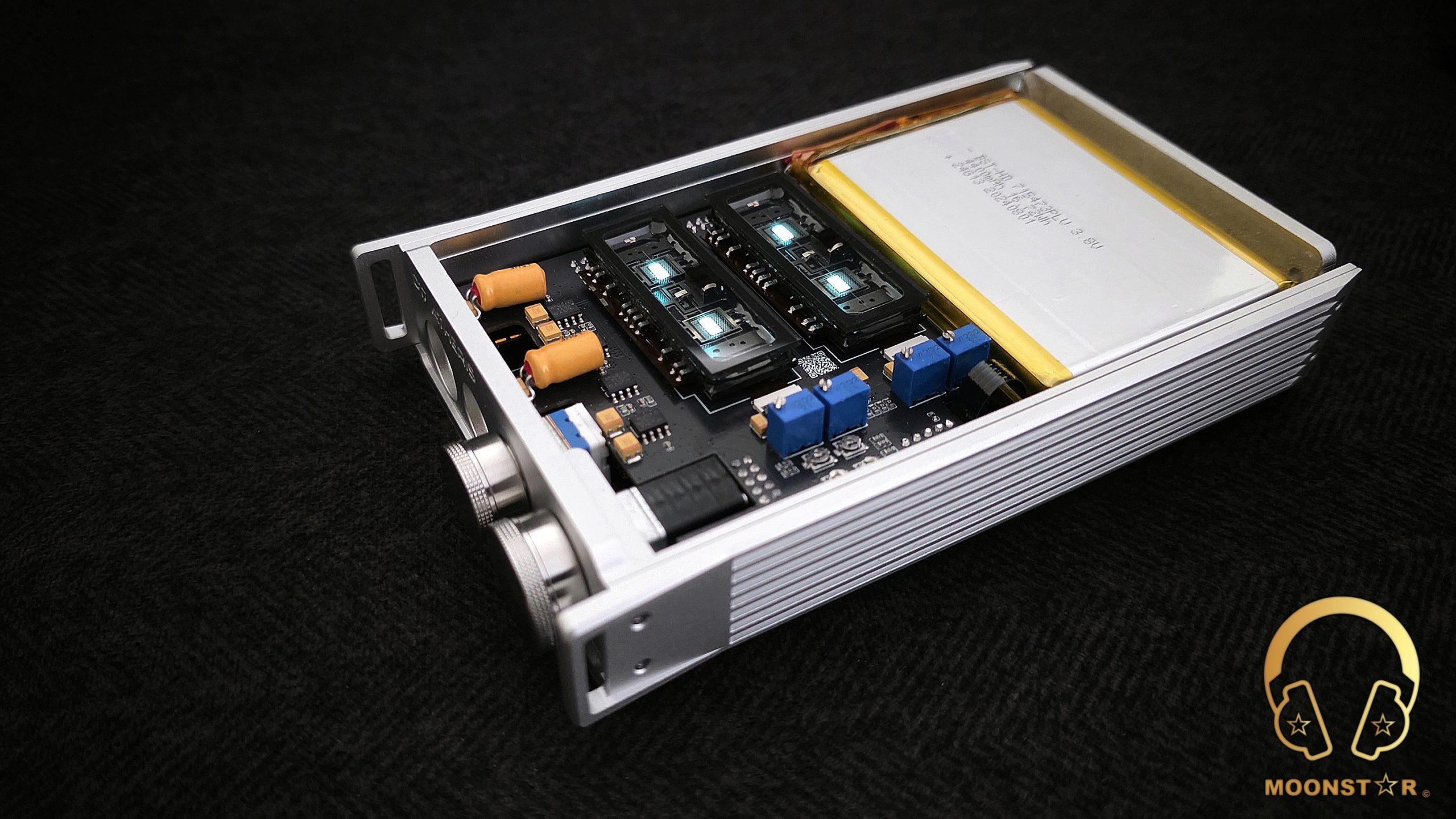
Equipment’s used for this review:
- DAC’s : iBasso D17 Atheris, iBasso D16 Taipan
- USB Source : iBasso DX340, Samsung Galaxy S25 Ultra, MSI VECTOR GP68 HX 13V
- IEM’s : iBasso IT07, Campfire Audio Supermoon
- Headphones : iBasso SR3
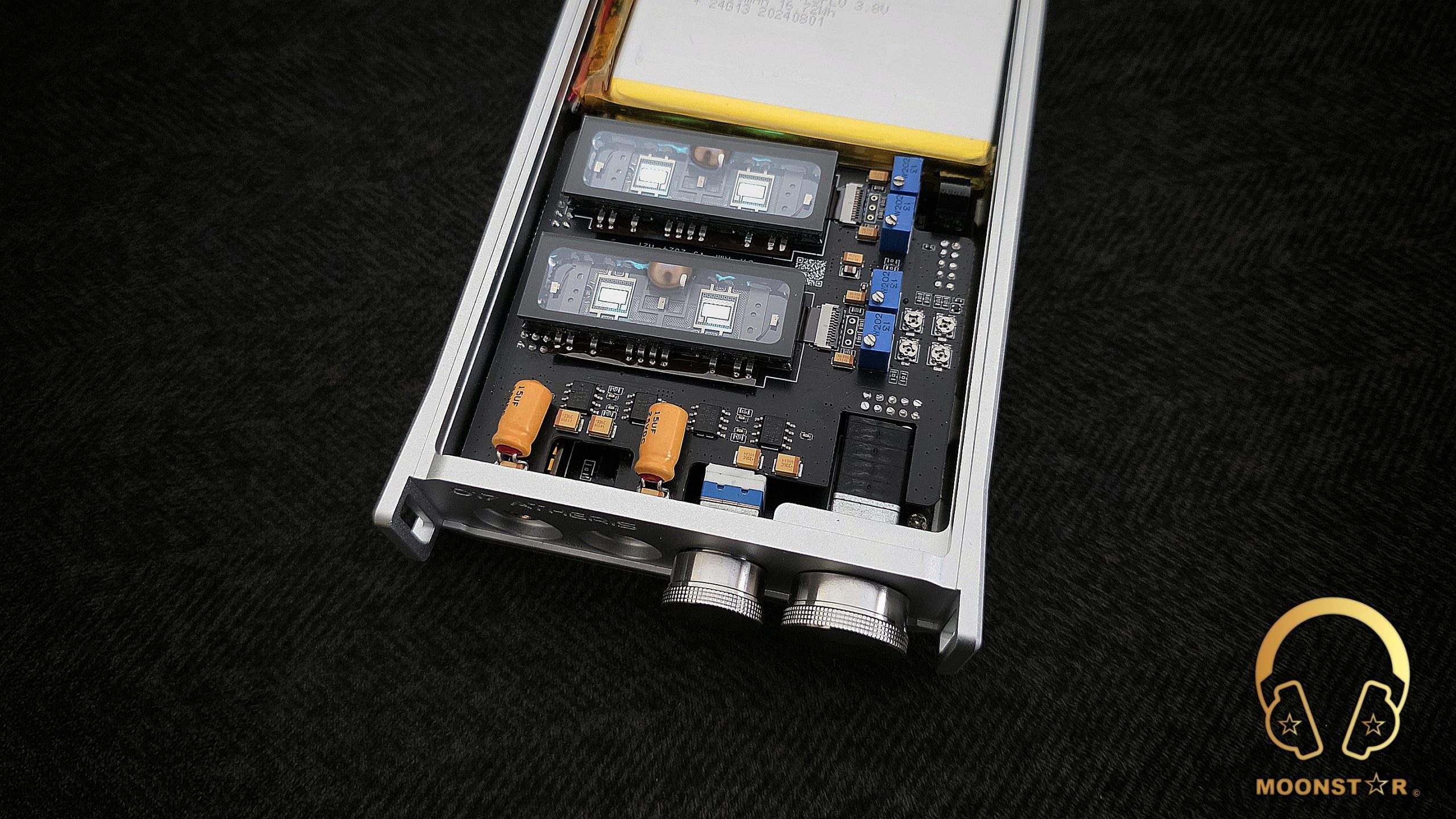
Albums & Tracks Used for this Review:
Vocal Jazz / Smooth Jazz
- Norah Jones – Come Away With Me (Flac 24bit/96kHz)
- Diana Krall – So Wonderful (DSF)
- Barry White – Just The Way You Are (Flac 24bit/48kHz)
- Isaac Hayes – Walk On By (Flac 16bit/44.1kHz)
- Sting – Englishman in New York (Flac 24bit/48kHz)
- Otto Liebert & Luna Negra – The River (Flac 24bit/192kHz)
- Ferit Odman – Look, Stop & Listen (Flac 24bit/192kHz)
- Charly Antolini – Duwadjuwandadu (Flac 24bit/192kHz)
Soul / R&B
- Aretha Franklin – I Say A Little Prayer (Flac 24bit/96kHz)
- Adele – My Little Love (Apple Lossless)
- George Michael – Don’t Let the Sun Go Down on Me (Flac 24bit/192kHz)
- Eric Clapton – Wonderful Tonight (Flac 24bit/96kHz)
Pop / Rock Classics
- Michael Jackson – Billie Jean (Flac 24bit/96kHz)
- Elton John – Rocket Man (Flac 24bit/96kHz)
- David Bowie – Heroes (Flac 24bit/192kHz)
- U2 – Sunday Bloody Sunday (Flac 16bit/44.1kHz)
- Lorde – Royals (Flac 24bit/48kHz)
- Dave Gahan – Kingdom (Apple Lossless)
Electronic / Experimental
- Daft Punk – Instant Crush (Flac 24bit/96kHz)
- Daft Punk – Doin’ it Right (Flac 24bit/96kHz)
- Bro Safari, UFO! – Drama (Apple Lossless)
- Armin Van Buuren – Vini Vici (Flac 16bit/44.1kHz)
- Yosi Horikawa – Bubbles (Apple Lossless)
- Toutant – Rebirth (Apple Lossless)
Alternative / Indie / Art Rock
- Radiohead – Live in Berlin “Album” (Apple Lossless)
- Radiohead – Pyramid Song (Apple Lossless)
- Muse – Hysteria (Flac 24bit/96kHz)
- Red Hot Chili Peppers – Nobody Weird Like Me (Flac 24bit/48kHz)
- Lunatic Soul – The Passage (Flac 16bit/44.1kHz)
- Portishead – It Could Be Sweet (Apple Lossless)
- Gogo Penguin – Raven (Flac 24bit/192kHz)
- Gogo Penguin – Murmuration (Flac 24bit/192kHz)
- Massive Attack – Angel (Flac 24bit/48kHz)
- Bear McCreary – Valkyries (Apple Lossless)
Classical / Orchestral
- Max Richter – On the Nature of Daylight (Flac 24bit/96kHz)
- Chopin – Nocturne No. 20 in C-Sharp Minor (Flac 16bit/44.1kHz)
- Clair de Lune – Claude Debussy (Apple Lossless)
- Tchaikovsky – Symphony No. 5 (Flac 16bit/44.1kHz)
- Vivaldi – Le Quattro Stagioni “The Four Seasons” (Apple Lossless)
- Fazıl Say – Nazım Oratoryosu (Live) (Flac 16bit/44.1kHz)
Jazz / Instrumental
- Miles Davis – So What (Apple Lossless)
World / Traditional
- Sertap Erener – Aşk (Flac 16bit/44.1kHz)
- Edith Piaf – Non Je Ne Regrette Rien (Flac 16bit/44.1kHz)
Metal / Progressive Rock
- Metallica – Dyers Eve (Flac 24bit/96kHz)
- Metallica – Sad but True (Flac 24bit/96kHz)
- Megadeth – Sweating Bullets (Apple Lossless)
- Opeth – Windowpane (Flac 16bit/44.1kHz)
- Deftones – My Own Summer (Shove It) (Flac 16bit/44.1kHz)
- Rush – Tom Sawyer (Flac 16bit/44.1kHz)
- Slayer – Angel of Death (Apple Lossless)

The Sound:
The iBasso D17 Atheris offers a remarkably versatile and captivating sound profile, built around its tri-mode DAC architecture and integrated Nutube amplification. Fundamentally, it adheres to a natural, slightly warm tonality, offering slightly distinct but audible pathways: the R2R mode for an organic, flowing presentation, and the 1-bit mode for sharper, clinical resolution. This flexibility ensures the listening experience is highly adaptable, yet it consistently projects a sense of scale that belies its transportable design. Crucially, the output stage remains absolutely quiet and composed, presenting a pure, black background devoid of any audible hiss across all tested pairings.
This review is based on approximately 150 hours of burn in across all operating modes. Testing utilized the 4.4mm balanced output, paired with the iBasso DX340 DAP, a Samsung Galaxy S25 Ultra smartphone, and an MSI VECTOR GP68 HX 13V PC. Impressions draw from three reference transducers: the iBasso IT07 (hybrid, W shaped tuning with punchy bass, lush mids, energetic treble), the Campfire Audio Supermoon (planar, known for crisp transients, clear mids, agile bass, and a refined high end roll off), and the iBasso SR3 (open back biocellulose dynamic, offering a smooth, balanced signature, natural mids, and fatigue free extension).

DAC Modes & Sound Signature:
NOS Mode (Non-Oversampling):
In NOS Mode (Non-Oversampling), the D17 handles PCM and DSD files separately, establishing a vibrant and highly responsive sonic presentation. This mode prioritizes signal purity and natural flow. The tube stage provides subtle smoothing, making this mode inherently lifelike and ideally suited for acoustic material by blending R2R’s analog warmth with 1-bit detail. This configuration offers tight, full bodied bass, a naturally textured and intimate midrange with gentle fullness, and detailed, shimmering treble that decays smoothly without harshness. It provides a balanced, unforced sound that works universally.
OS Mode (All to R2R Mode):
In OS Mode (R2R Mode), the D17 directs all processing to the R2R DAC, resulting in a sound profile that creates an unusually vast and immersive soundscape. This setting expertly balances lushness and technical prowess, making it the ideal choice for extended, fatigue-free listening sessions, emphasizing the refined warmth and depth of the R2R architecture. In this mode, bass gains deeper impact and texture, rumbling authoritatively. The midrange conveys lifelike richness, with vocals presented smoothly and surrounded by a rounded glow. Treble sparkles with far reaching air, preserving harmonic content for a smooth, engaging lift.
SD Mode (All to 1-bit Mode):
In SD Mode (1-bit Mode), the D17 converts all signals to DSD via the one-bit DAC, producing an intimate and flowing acoustic presence with distinct closeness. This presentation musically reveals fine intricacies through the tube stage, ideal for enjoying a natural, flowing sound. Here, bass tightens significantly, prioritizing speed over body, remaining precise and agile. The midrange shifts slightly forward with heightened resolution, expertly exposing inflection, though it is noticeably drier than the R2R. Treble sharpens analytically, making micro details vivid while the tubes prevent listening fatigue.
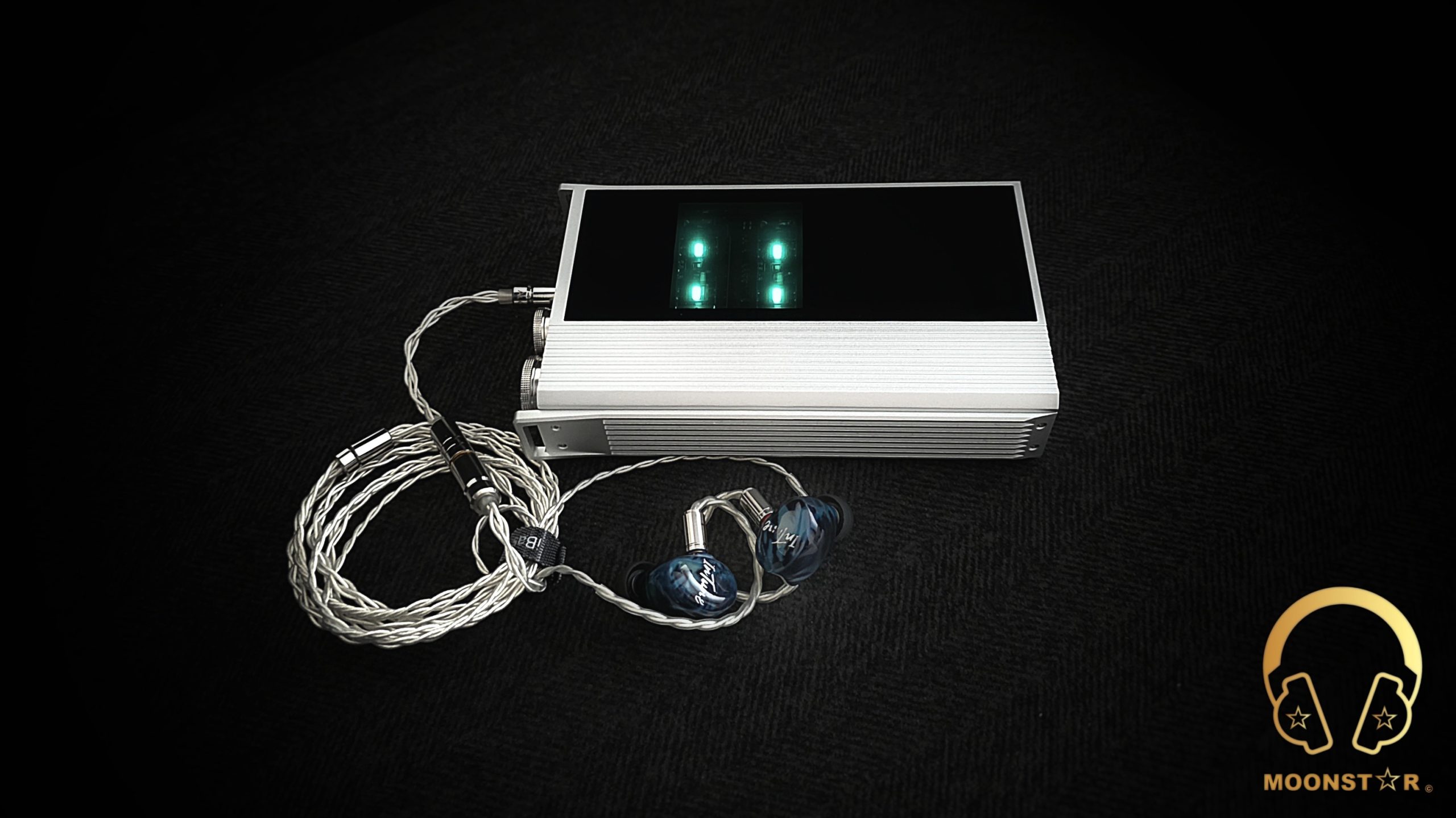
Bass:
The iBasso D17 Atheris establishes reliable control over the low frequencies, consistently achieving an optimal balance between impact and refinement across all three DAC modes. Sub bass extension is deep, providing an authoritative rumble that remains reliably tight and articulate. It successfully avoids uncontrolled bloom or muddiness, even with demanding electronic or orchestral material. Mid bass punch delivers good texture and presence, integrating smoothly without overpowering the midrange or treble. This precision is particularly dependable in complex, rhythm heavy passages, where kick drums and bass lines maintain distinct weight, separation, and natural decay.
The OS Mode consistently adds the most body and warmth, giving the low end a tactile, slightly analog quality. Sub bass feels rounded and resonant, with a subtle euphonic quality that enhances overall impact without sacrificing transient speed. This signature is reliably engaging for rock and orchestral works, lending significant realism to double basses and timpani. NOS Mode achieves a balance, maintaining the R2R’s organic texture while tightening the response for improved layering in acoustic jazz or vocal tracks. The bass here is balanced, full, and transparent, allowing subtle details like string plucks or finger slides on upright bass to emerge clearly. The SD Mode prioritizes speed and precision, rendering bass lines with quick transients and a solid level of accuracy.
Pairing versatility is a key and confirmed attribute. With the iBasso IT07, the D17 Atheris reliably refines its powerful foundation: OS Mode adds harmonic richness for a fuller sound that does not affect vocals, while SD Mode sharpens transients. The Campfire Audio Supermoon is complemented well by SD Mode, which enhances microtextures in the bass, while NOS Mode tempers any potential planar leanness with subtle warmth. The iBasso SR3 benefits from the D17’s mode flexibility: OS Mode provides effortless weight and cohesion, and SD Mode effectively reveals intricate decay patterns in double bass solos, guaranteeing versatility for the user.
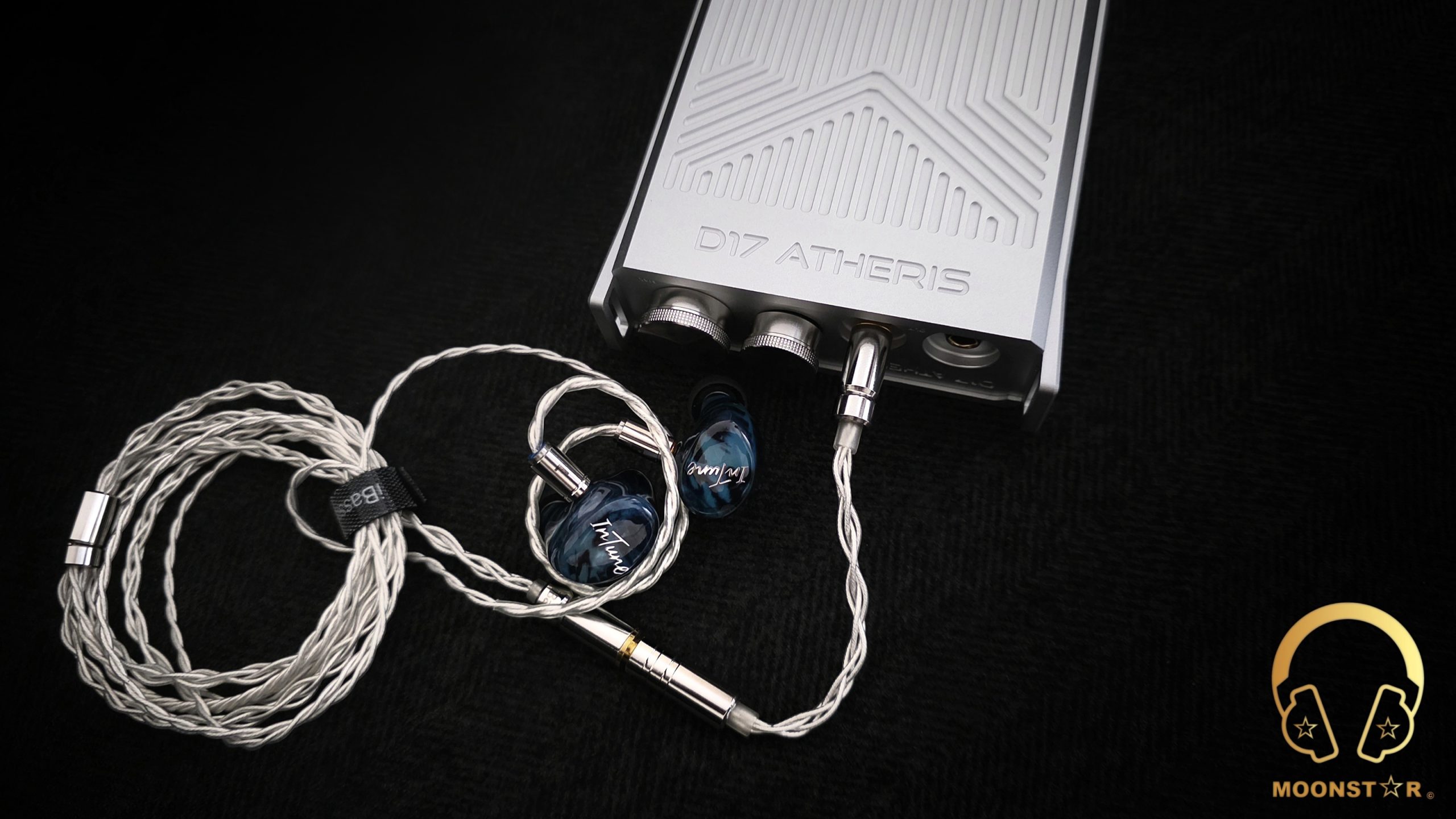
Midrange:
The iBasso D17 Atheris renders the midrange with a decent combination of intimacy and technical precision. The resulting presentation is reliably natural and engaging, consistently avoiding extremes so that it is neither shouty nor recessed. Lower mids carry a gentle warmth and body that enrich timbre without obscuring detail, successfully establishing an inviting sonic space where acoustic instruments sound authentically present. This quality proves particularly compelling in vocal centric recordings, where breath control and subtle throat vibrations emerge with verifiable realism, and piano accompaniment consistently maintains harmonic complexity and precise spatial positioning.
The OS Mode reliably provides the richest, most voluminous midrange: vocals and instruments take on a subtle, euphonic coloration that significantly contributes to emotional engagement. Female voices display a refined texture and nuanced chest resonance, while male vocals develop an authentic, deep quality. NOS Mode minimizes coloration for a more unprocessed signal path, resulting in an intimate and transparent presentation that is highly effective for recordings relying on raw emotional delivery. The SD Mode advances the midrange with elevated resolution and micro detail retrieval, albeit with a drier texture. This analytical capability is beneficial for critical listening, as it reliably exposes subtle vocal inflections that other modes may smooth over.
The iBasso IT07 shows synergy in NOS Mode, where the DAC effectively balances the IEM’s slightly forward midrange with natural spacing, allowing vocal harmonies to layer precisely. OS Mode introduces harmonic density without causing congestion. With the Campfire Audio Supermoon, SD Mode reveals previously obscured detail in vocal layering, while OS Mode introduces organic warmth that reliably tempers the planar driver’s analytical tendency. The iBasso SR3 achieves its most expansive midrange expression in OS Mode; the headphone’s inherent richness projects a holographic soundstage width, with instruments showing authentic resonance that extends convincingly beyond the ear cups, providing a dependable immersive experience.

Treble:
The D17 Atheris establishes a high standard for treble performance, successfully balancing extension and smoothness. It reproduces high frequencies with ample air and detail, ensuring sustained long-term listenability. Cymbals are rendered with a realistic timbre and reliable natural decay; brush work resolves individual wire strokes without introducing any perceptible harshness, providing confidence in the unit’s control. The integrated tube stage functions as a precise tempering element, effectively mitigating digital glare while diligently preserving the critical microdynamics in percussion and string harmonics.
The OS Mode processes the treble into a consistently airy and non-fatiguing state. High frequencies feel extended yet relaxed, featuring a characteristic that reliably prevents listening strain. This response proves highly effective for managing inherently brighter recordings, allowing the energetic upper end of the IT07, for example, to be controlled without sacrificing its required vibrancy. The NOS Mode ensures the preservation of natural shimmer and decay, offering unprocessed treble that precisely reveals the acoustics of the recording venue, allowing reverb tails to linger authentically in the spatial field. The SD Mode enhances high-frequency detail, advancing micro-details with surgical precision. Cymbal crashes acquire a crystalline edge and air, positioning this mode as a tool for focused analysis, though it requires intentional component matching to avoid excessive brightness.
The Campfire Audio Supermoon shows significant synergy with the OS Mode. The planar driver’s inherent high end characteristic gains extension and resolution without introducing sibilance, confirming a reliably balanced high frequency presentation. The SD Mode, when paired with the IT07, refines the energetic treble into a state of controlled excitement, eliminating sibilance while securely maintaining dynamic impact. The iBasso SR3 consistently delivers high level treble performance across all modes. OS Mode provides controlled airiness, NOS Mode offers natural extension, and SD Mode delivers analytical precision, guaranteeing that users can confidently select the mode that best suits their listening objective be it engagement or critical assessment.

Soundstage & Imaging:
The D17 Atheris establishes a significant soundstage scale for a portable device, successfully crafting a three dimensional field that compares favorably to many dedicated desktop setups in terms of width, depth, and height. Instruments occupy distinct positions with stable placement. Piano, bass, and drums form a defined triangular relationship around the listener’s head. Imaging precision accurately positions elements; even in complex arrangements, guitar layers and vocal harmonies maintain clear separation and definitive directional cues, indicating effective spatial resolution.
OS Mode expands the stage laterally and contributes atmospheric depth. Hall reverb feels expansive, with orchestra sections positioned appropriately across the virtual soundfield. NOS Mode focuses on intimate staging with precise central imaging, a configuration that is effective for solo performances where proximity enhances emotional connection. SD Mode prioritizes accuracy and layering, revealing subtle spatial cues in complex mixes that other modes may integrate closely.
The iBasso SR3 enhances this performance notably. Its open back design combines with the D17’s expansive presentation (especially in OS Mode) to create broad width where orchestras breathe and decay naturally. Even with IEMs, the D17 maintains impressive out of head imaging. The IT07 achieves concert hall scale in OS Mode, while the Supermoon reveals intricate layering in SD Mode that is analytically precise in its spatial definition. This versatility ensures effective spatial reproduction across different headphone types.
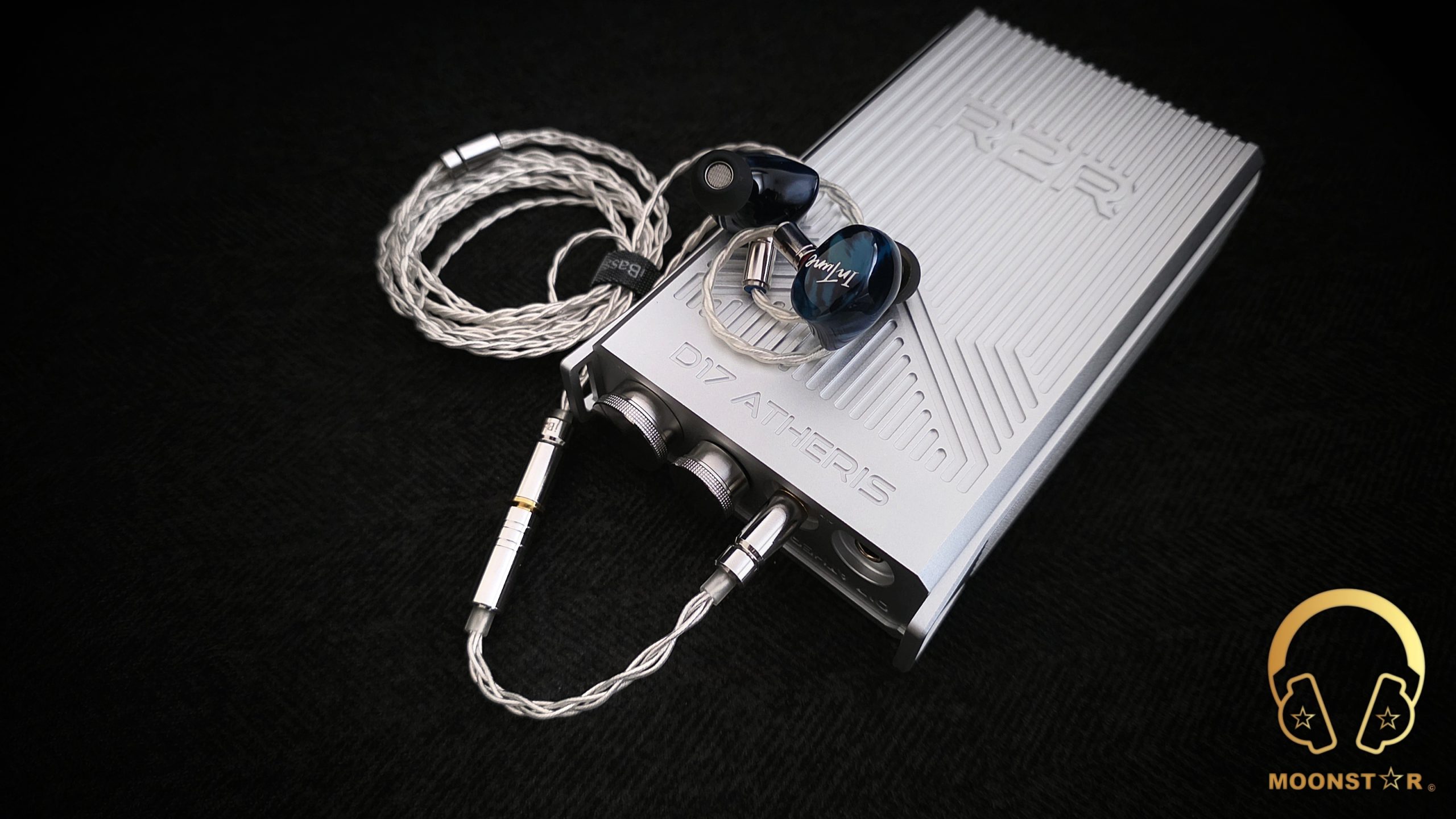
iBasso D17 Atheris versus iBasso D16 Taipan:
The D17 Atheris offers a direct evolution of the D16 Taipan’s foundation as a transportable powerhouse, but it introduces meaningful changes in versatility and refinement. Where the D16 relied on a single 1-bit discrete DAC for its precise, singularly neutral delivery, the D17 adds an R2R ladder option, introducing multiple selectable modes. This dual setup enables the R2R-based OS Mode (for expansive, analog-like sound) and the DSD-processed SD Mode (for intimate, flowing warmth), alongside the third NOS mode (for vibrant responsiveness). This increased flexibility, combined with the Nutube amplification (versus the D16’s solid state Class A AMP), shifts the overall tuning toward greater ambience and tonal softness, significantly expanding its appeal for those seeking distinct tube character without sacrificing essential resolution.
Power wise, the D17 slightly edges ahead in balanced output (1200mW versus 1117mW at 32 Ohms), though both units are more than capable of handling demanding loads like the Arya Organic. Battery life is substantially improved, offering roughly 13 to 14 hours compared to the previous 9 to 10 hours, and the enhanced dual battery isolation further reduces crosstalk, contributing to a “blacker” sonic background. Design wise, the D17 feels more rugged at 470g compared to 312g, featuring the visible tube glow and enhanced seismic damping, but it sacrifices some of the D16’s slimmer, more svelte profile.
Sonically, the D17 offers a measurably larger stage and more detailed retrieval across all frequencies, particularly through its mode flexibility. Bass gains subtle body and mids bloom with added soulfulness. For the SR3, the D17 in R2R mode gives the soundstage an effortless, wide expansion that the D16 couldn’t quite match. Treble remains smooth on both, but the D17’s mode selection allows for much finer tonal tuning for brightness. Using the Supermoon, the D17’s 1 bit mode retrieves micro textures with superior precision compared to the D16, while its R2R mode adds crucial warmth to the planar’s presentation. Furthermore, the D17’s tube stage is highly complementary to the energetic nature of the IT07, providing a richer harmonic layer and more controlled decay tails than the D16’s solid state presentation offered.
At $1999 versus $1499, the D17 convincingly justifies its premium through its modular sound options and upgraded internals, making it a definitive step up for users prioritizing maximum tonal flexibility. The D16, however, retains its value for purists who favor a more unadorned, singular neutrality.

Conclusion:
The iBasso D17 Atheris establishes itself as a definitive flagship in the transportable DAC/Amplifier category, utilizing its unique tri mode R2R and 1 bit architecture with integrated Nutube amplification to offer unparalleled tonal versatility. It successfully marries the organic, immersive warmth of tubes with clinical precision, ensuring compatibility and synergy with a vast range of transducers. While it sits at a premium price point and is larger than its predecessor, the D17 justifies its cost through superior power output, measurably improved battery life, and an expansive, precisely imaged soundstage that rivals desktop units. For the enthusiast who demands maximum flexibility, power, and sonic character in a transportable package, the D17 Atheris is a convincing and significant upgrade.
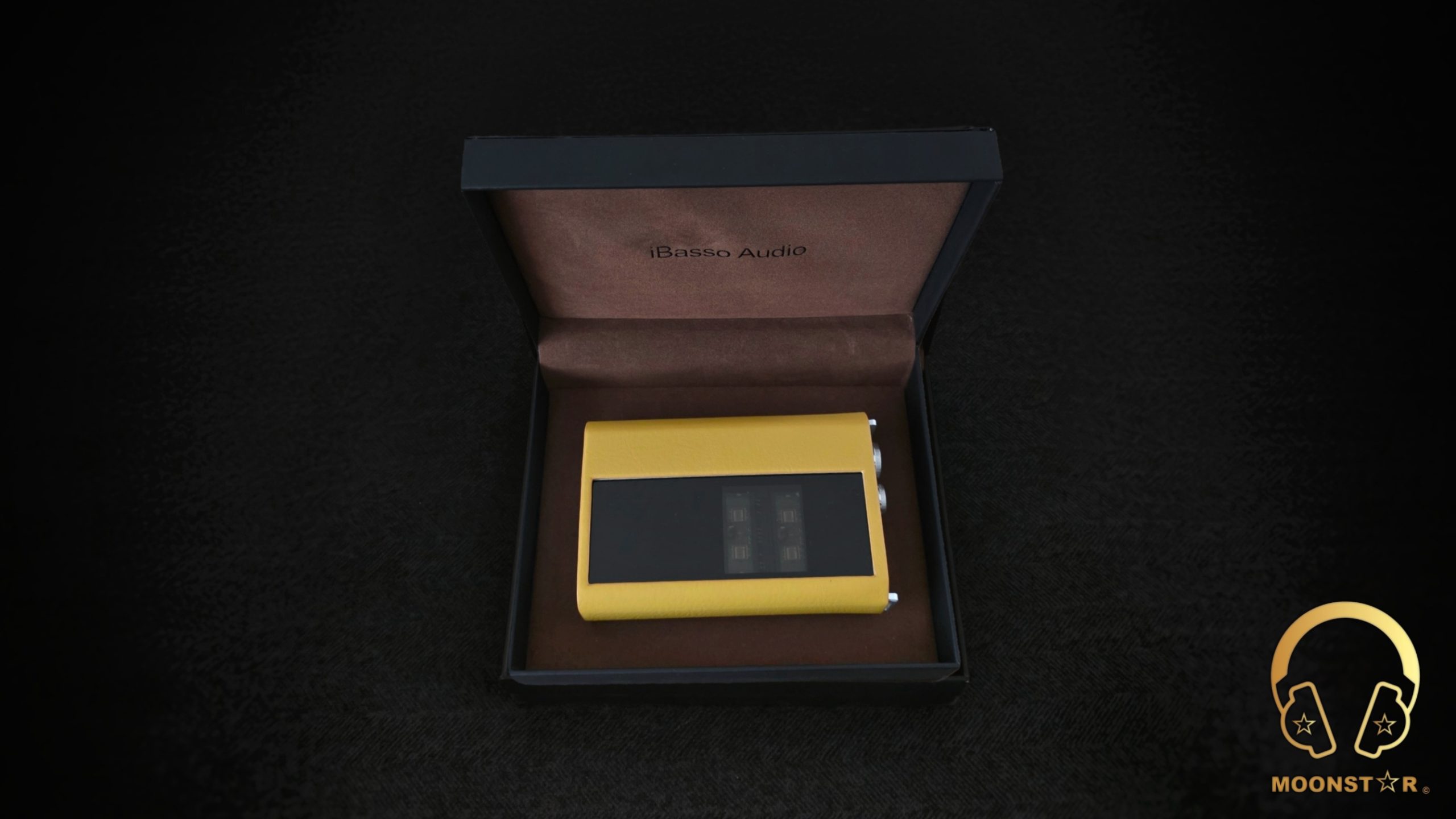
Pros & Cons:
- + Excellent Sonic Performance
- + Expansive Soundstage with Strong Imaging
- + Versatile DAC Modes for Tailored Sound
- + Quiet operation and low distortion for a DAC with Nutube implementation.
- + Tube Amplification Adds Organic Warmth (1200mW @ 32ohm Balanced)
- + Advanced Hardware (FPGA-Master 3.0, Precision Resistors, Dual Batteries, Nutubes)
- + Precise 24-Step Attenuator with Analog/Digital Control
- + Durable Construction with Seismic Isolation
- + Sleek Design
- + Comprehensive Accessories (Leather Case, Multiple Cables)
- – No Brightness adjustment option for the screen
- – The output power drops to 340 mW @ 32 ohms in 1-bit Mode
- – Slightly larger compared to the D16 Taipan
Thank you for the Read!

